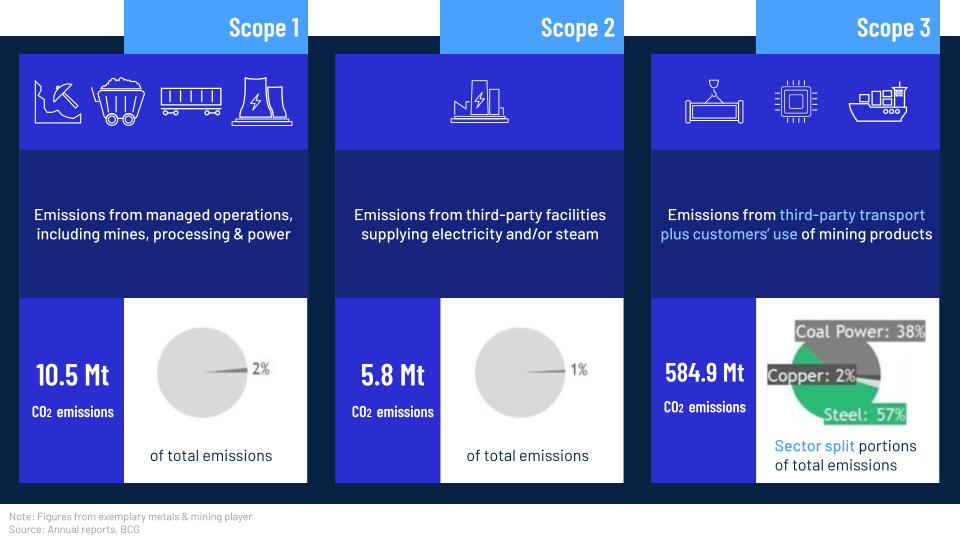Our research has highlighted the scale of the financed emissions challenge and the need for financial institutions to use their investment influence to drive decarbonisation efforts.
Climate goals are becoming more ambitious. And this means a tighter focus on companies' scope 3 emissions as this is often where businesses can achieve the biggest decarbonisation impacts.
For financial institutions such as banks, insurance companies and investment managers, scope 3 emissions from supply chains and lending/investment portfolios are often more complex than for other industries. They mostly derive from the investments they hold and the lending/underwriting they provide to other companies, known as 'financed emissions'. Financed emissions are the share of operational emissions from the companies under an institution's investment/lending portfolio, with methodologies such as PCAF or JIM providing a system for measuring these emissions.
While the process is complex, the pay-offs are considerable. CDP found that these financed emissions are on average approximately 700 times higher than the organisation's operational emissions. For example, the indicative financed emissions from the UK financial sector in 2019 were found to be 1.8 times higher than the UK's own greenhouse gas emissions (excluding aviation and shipping). Financial organisations thus have a major role to play in the decarbonisation of the global economy, yet it is estimated that since the Paris Agreement in 2015, the 60 largest banks have instead invested $5.5 trillion USD in fossil fuels. Clearly much more needs to be done to pivot towards more sustainable investment and lending practices.
Change is already underway within the fossil fuel industry, as developments in the Netherlands, United States and Australia indicate. Support for decarbonisation has also been spurred on by Climate Action 100+, a group of over 570 investors engaging with large organisations to take action on climate change and drive emission reductions, with further pressure on investment groups anticipated as more focus is placed on their emissions and climate impacts.
Meanwhile, some financial institutions have already committed to reducing their investment in coal and fossil fuels, such as BNP Paribas (coal divestment in EU and OECD by 2030 and globally by 2040), ING (zero coal by 2025) and Commonwealth Bank (no direct finance for all new and expanded oil and gas extraction projects, as well as some critical enabling infrastructure by 2025). Even JP Morgan Chase, the world's largest investor in fossil fuels, has taken steps to reduce investment in Arctic oil drilling and coal. Other banks and lending institutions have not set clear targets, while those that have done so typically limit their statements to thermal coal lending. The Powering Past Coal Alliance is a group of 167 national and sub-national governments, businesses, and organisations looking to accelerate the transition to clean energy away from coal. Financial institutions looking to get started on their sustainable finance journey should begin with decarbonising their investment portfolio, which starts with five simple steps.
Understanding emission sources in your portfolio
For some organisations, scope 3 emissions may be easy to calculate, understand and reduce, such as those deriving from business flights and waste. For financial institutions, however, these emissions are often more complex and material, and form a major part of the revenue stream. The Partnership for Carbon Accounting Financials (PCAF) standard has developed a methodology to measure these emissions across various asset classes: listed equity and corporate bonds, business loans and unlisted equity, project finance, commercial real estate, home mortgages, motor vehicles loans and sovereign bonds. For all of the companies and projects in your investment or lending portfolio, you are carrying their operational emissions within your overall amount of financed emissions. Currently, a financial organisation should consider the scope 1 , 2, and significant scope 3 emissions from its portfolio; however, this may change to include all scope 3 emissions in the future.
Those organisations that have not considered reducing these emission sources could be misunderstanding the double materiality risks they carry: the risks to their business, like stranded assets or reputational risks, and their contribution to making the Earth uninhabitable.
A simple example is that of a financial investment in a mining company. The operational emissions (scope 1 and scope 2 emissions directly attributed to the mining operations) typically include diesel, electricity and fugitive gases. Traditionally, financed emissions exclude scope 3 emissions from activities such as transportation and use of the coal, either in a power station (known as thermal coal) to generate electricity, or in industrial processes such as steel making (known as coking or metallurgical coal).
In this example, if the financial organisation holds a 10% stake (either debt or equity) in the mining company, their financed emissions would be 1.63 MtCO2e = 10% x (10.5 + 5.8 MtCO2e).



















